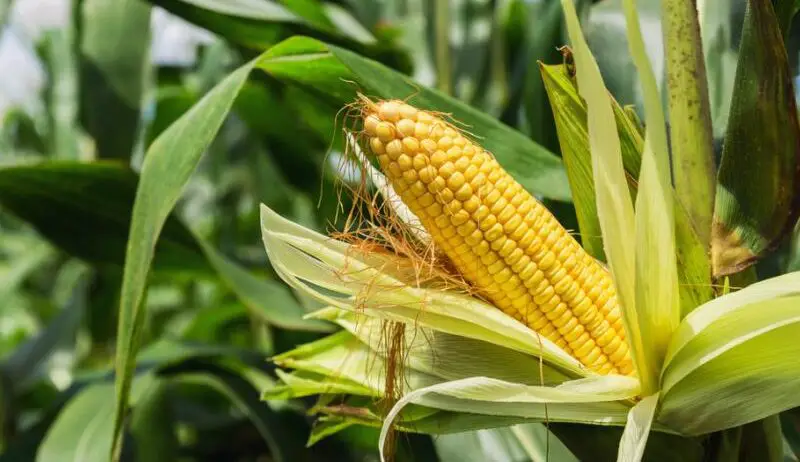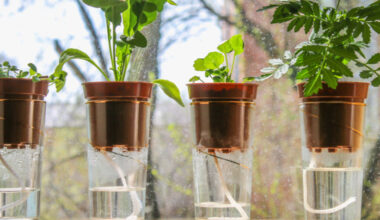Corn is not widely grown in our gardens, yet it is a food rich in carbohydrates, vitamins and minerals. Easy to grow and fast growing, corn can also be used as a windbreak at the back of the garden.
It will quickly grow taller than the children who will see how a giant cob is formed.
The sweet corn we suggest can be eaten grilled, with a little butter, your children will be happy to munch it.
Contents
Can I sow kernels seeds and grow corn ?
It will be difficult to germinate corn seeds intended for consumption, these last ones were treated with multiple times, in particular to be able to preserve them better, and that they keep their tastes better. As a result, these corn seeds have lost most of their ability to become a corn plant.
However, it is not complicated at all to get corn seeds to sow, you will find them in most garden centers near you. Finally, we explain how to proceed, once you have these seeds in your possession.
In which soil and under which exposure to sow the corn?
The corn appreciates a deep, rich soil (compost, manure in the autumn), well worked (spade the ground before the winter) and a sunny situation.
When to sow corn ?
Sow in May-June when the soil is sufficiently warm. To harvest as early as mid-June, sow in cups, in a warm place (59-64°F) in March and transplant outdoors in early May. To harvest later (in September, reserved for mild climates), sow in the field in mid-July.
How to sow corn?
Count 8 plants per m² for a harvest of 800g of corn per m². Sow by 3 rows or square to obtain a good pollination. Space the plants from 8 to 12 inches.
The emergence is done in about ten days when the ground is sufficiently heated. Stub the plant to make it stronger and water thoroughly.
Where to place corn in the garden?
Given the high shape of corn, whose stalk often rises to more than 2 m, it is interesting to use it as a vegetable garden border. It thus delimits the spaces of culture and according to its orientation to the sun, can also bring a little saving shade to some sensitive vegetables like lettuces or cabbages.
The fertilization of the corn remains on the other hand essential to obtain good and large ears. And the more specimens there are, the greater the chances of fertilization. Several rows of corn are better than one. They should be spaced 2 to 3 feet apart and each plant should be 8 inches apart.
You can also take advantage of the strength of its stalk to stake other plants with which corn coexists perfectly, such as string beans. For a total optimization of the space, feet of zucchini or squash are welcome as ground cover. They will bring a little more freshness to the corn.
Planting corn
While most cereals are best planted in the fall or spring, corn (Zea mays) is best planted in the summer. It requires a minimum temperature of 50°F for germination and 64°F for flowering.
Able to adapt to different types of soils, corn will not be able to resist a lack of water. Its yield will depend on its water requirements.
Corn requires a deep, light, cool and humus-rich soil. When preparing the soil, add manure or compost the fall before planting. This will enrich the soil.
There are several ways to plant your corn:
- in a row
- in pots
- indoors
For row planting corn, dig 1 inch deep furrows. Sow the seeds lightly, in rows 28 inches apart.
Then cover the seeds with fine soil, and after emergence, thin to 8-10 inches. Beware of birds, which can steal corn seeds even after they have germinated.
If you decide to go with a packet planting, plant 2 seeds per bucket every 10 inches. Then cover with fine soil and keep only the best seedling after emergence.
It is also possible to plant corn indoors. Sow 3 or 4 seeds per bucket, mixed with potting soil and a little compost. It will be enough to plant the most developed plant afterwards.
It is recommended to plant only one variety of corn at a time. If you want to plant 2 varieties, choose varieties with staggered flowering. If your garden is located less than 100 feets from a corn field, it will be necessary to protect it at the time of the bloom.
How long does it take for corn to start growing
You may be asking, “How long does it take for corn to grow?” There are many varieties of corn and a few different methods for planting corn, so you can plant 60-day, 70-day, or 90-day corn.
Most people grow corn think about their own corn seed supply. One of the different methods of planting corn is to have a continuous growing season. To do this, plant several types of corn that mature at different time intervals. Alternatively, plant the same type of corn staggered 10 to 14 days apart to have a continuous harvest.
When to harvest corn?
Sweet corn is harvested 80 to 120 days after planting. Harvesting generally takes place from the end of July to October. The harvest depends on several criteria: the earliness of the variety, the watering, the heat…
To know if the corn is ripe, take a few grains from an ear. If they are slightly milky when you crush them, then it is ready to be harvested.
Diseases, pests and parasites
The corn borer caterpillar sometimes burrows into the corn stalks. This causes a break in the stalk. To prevent any attack, grind the crop waste before using it as compost or mulch.
In case of severe attack, spray the plants with a solution of Bacillus thuringiensis.
Also, rotate crops well by not growing only corn on the same plot for 4 years.









